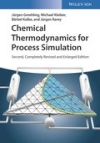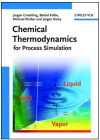Simultaneous Mixture Regression (gE-Models)
The software tool Regression Mix is used for the rapid simultaneous regression of any number of binary phase equilibrium and excess property data sets. The following data can be included:
| Data Types | Liquid Phase Models | Vapor Phase Models |
|---|---|---|
|
|
|
Up to quadratic temperature dependence of the binary interaction parameters is supported. The format is compatible with major process simulators. Regressed parameters are reported in DDB and Aspen Plus format and can be exported to the parameter data bank ParameterDB for further use.
Numerous dialogs allow detailled control over regression settings such as:
- pure component vapor pressure adjustment to authors or user values for each component and data set
- initial parameter values, step-width, convergence criterion
- pure component properties used in the regression
- weighting factors of data points, data sets, data type
- several different deviation types for each data point can be simultaneously minimized (absolute and relative deviations in pressure, temperature, vapor mole fraction, activity coefficient, ....)
- data points inside the miscibility gap can be automatically excluded
Regression results are available as short or detailed text output or via a multitude of graphical representations. User settings for the different plots are stored with the project files. Data points in the plots can be selected and the resp. data point and data set dialogs for the marked point or data set can be accessed via the context menu.
The following figures show a few of the possible graphical representations for a regression of data for the system Ethanol - Chloroform using NRTL:

Scientific Papers
| 2009 | Recommended NRTL Model Parameters by Simultaneous Correlation of VLE, Infinite Dilution Activity Coefficients and Excess Enthalpy Data | Tochigi K., Rarey J., Gmehling J. | Journal | J.Chem.Eng.Japan, 42, 6, 376 380 (2009) | |
| 1989 | Ermittlung Optimaler Modellparameter zur Beschreibung des realen Verhaltens von Nichtelektrolytsystemen durch simultane Anpassung an verschiedene Thermodynamische Daten | Rarey-Nies J.R., Tiltmann D., Gmehling J. | Journal | Chem.Ing.Tech., 61, 5, 407 410 (1989) |


